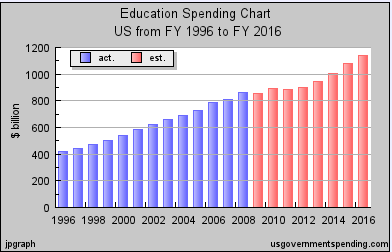With the rising costs of tuition at institutes of higher education, the average student looks towards the federal government for help. After many years of legislation and passed bills only students who have formerly served in the military seem to have receive the most benefits. Are students who have formerly served in the military receiving special benefits from the federal government, or are veterans earning their education as another lieu of payment? Veterans who use their GI Bill are they receiving fair compensation or are they being set up to be targeted by for profit institutions? What makes it possible for the common person to support free education for GI's while the average student deals with loans and debt?
Complete Bibliography:
Anderson, Benedict. "Imagined Communities: Reflections on the
Origin and Spread of Nationalism, Revised Edition Paperback – November 17,
2006." Imagined Communities: Reflections on the Origin and Spread of
Nationalism, Revised Edition: Benedict Anderson: 9781844670864: Amazon.com:
Books. N.p., n.d. Web. 18 Nov. 2014.
Education and Training." Post-9/11 GI Bill -. VA, n.d. Web. 12 Dec. 2014.Jacobs, W. E., and Maureen McMahon. "Counterpoint: Free College Education Is Poorly Matched With The Needs Of The Students Or The Economy." Points Of View: Free College Tuition (2014): 3. Points of View Reference Center. Web. 3 Dec. 2014.
McGrevey, Michael, et al. "Chapter 15.
1987-Present Effect Of The Montgomery GI Bill: Creating A Recruiting And
Educational Incentive." Across the Aisle : The Seven-Year Journey of
the Historic Montgomery GI Bill. 154. Jackson, MS: University Press of
Mississippi, 2011. Project MUSE. Web. 23 Oct. 2014.
Mettler, Suzanne. Degrees of Inequality: How the Politics of Higher Education Sabotaged the American Dream. N.p.: n.p., n.d. Print.
Moon, Tracey L., and Geraldine A. Schma. 2011. A proactive approach toserving military and veteran students. New Directions for Higher Education, no.
153. Wiley Online Library. Accessed May 10, 2012.
"Office of Public and Intergovernmental Affairs." VA and
the Post 9/11 GI Bill -. US Department of Veteran Affairs, n.d. Web. 16 Nov.
2014.
Reed, Adolph Jr. "A GI Bill For Everybody." Dissent (00123846) 48.4 (2001): 53-58. Education Full Text (H.W. Wilson). Web. 23 Oct. 2014.STRACH, PATRICIA. "Making Higher Education Affordable: Policy Design In Postwar America." Journal Of Policy History 21.1 (2009): 61-88. Academic Search Premier. Web. 23 Oct. 2014.https://login.proxy.libraries.rutgers.edu/login?url=http://search.ebscohost.com/login.aspx?direct=true&db=aph&AN=44122934&site=eds-live
U.S Department of Education "Enrollment in Postsecondary
Institutions, Fall 2012; Financial Statistics, Fiscal Year 2012;
Graduation Rates, Selected Cohorts,
2004-09; and Employees in Postsecondary Institutions". Fall 2012. Web. Nov
17. 2014
U.S Department of Education: Budget http://nces.ed.gov/pubs2013/2013183.pdf.Vacchi, David. "Considering Student Veterans on the Twenty-first-century College Campus." About Campus, 18 June 2012. Web. 16 Oct. 2014. http://onlinelibrary.wiley.com/doi/10.1002/abc.21075/citedby.
Vacchi, David T., and Joseph B. Berger. "Student Veterans In Higher Education." Higher Education: Handbook Of Theory & Research: Volume 29 (2014): 93. Publisher Provided Full Text Searching File. Web. 23 Oct. 2014.
"VA Budget
Report." (n.d.): n. pag. Budget Report. Web. http://www.va.gov/budget/docs/summary/Fy2015-VolumeI-Summary.pdf.


.png)



